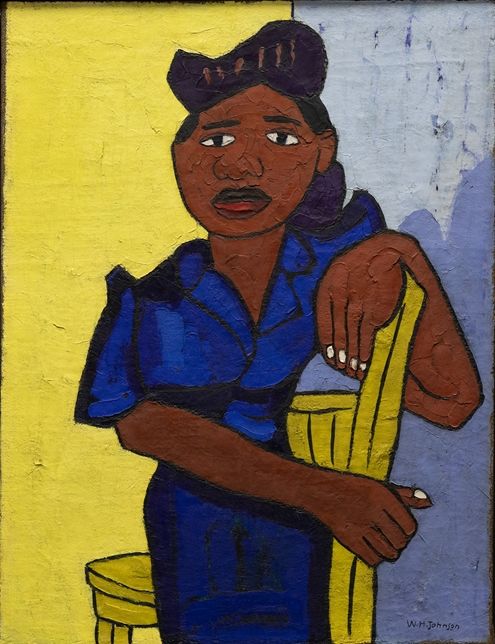by Sebastian Castro
The Metropolitan Museum of Art will be presenting a new exhibit in February titled “The Harlem Renaissance and Transatlantic Modernism.” The exhibit will showcase around 160 works of art, including paintings, sculpture, photography and film from prominent African American artists.
This exhibit has been a long-time goal of Met Curator Denise Murrell, who emphasizes the importance of the Harlem Renaissance in contextualizing the emerging persona of the African American in artistic mediums.
“I see it as a real turning point in the representation of the African American subject and in American art. It’s very much tied to a very important historical moment, which was the beginning of the Great Migration,” Murrell said. “This is the beginning of the modern Black subject.”
The Harlem Renaissance was a cultural revolution spanning the 1920s and 1930s resulting from the Great Migration, a mass movement of African Americans from the rural South to the Urban Northeast, Midwest and West. The Harlem Renaissance is characterized by an explosion in Black-produced poetry, sculptures, jazz and swing, opera and dance, all aiming to establish a new identity for African Americans, using a newfound foothold in education and the middle class to wax artistic on a history of slavery and oppression.
Despite its name, the Harlem Renaissance’s influence reaches far beyond just New York.
“When we think about the Harlem Renaissance, it is more an idea than it is a geographic location,” Murrell said. “It is a title that was given retroactively to a movement, that, in its own time, at least in the 20s, was called The New Negro Movement.”
Much of the exhibit is inspired by thinkers such as Alain Locke, Langston Hughes, Zora Neal Hurston and W. E. B. Du Bois. Murrell cites Locke’s book, “The New Negro”, as a key inspiration.
“The New Negro publication was really influential,” Murrell said. “They were advocating that a new visual language be created in painting and sculpture.”
Murrell emphasized the role Du Bois played in the emergence of the New Negro movement. In 1910, Du Bois, co-founder of the National Association for the Advancement of Colored People, or NAACP, created The Crisis magazine, the official publication of the NAACP and the country’s oldest African American publication, where he served as editor until 1934. Du Bois and his art director commissioned many artists for illustrations for the cover of The Crisis magazine, such as Aaron Douglas and Laura Wheeler Waring, supporting and contributing to their careers and the careers of many others. However, Du Bois was predominantly politically minded.
“W. E. B. Du Bois was primarily an activist, but he saw art as a tool that could be deployed to achieve the objectives of activism,” Murrell said.
Depictions of the Harlem Renaissance throughout history have long been embroiled in political controversy. In 1969, a year after the passing of the Civil Rights Act and the assassination of Reverend Dr. Martin Luther King Jr., the Met showcased the infamous “Harlem on My Mind”, which was met with complaints from both the Harlem community and the African American community as a whole. Despite claiming to represent the cultural capital of Black America, the Met chose to exclude artwork from African American artists. There were no paintings, drawings, or sculptures. Instead, museumgoers were met with a collection of newspaper clippings, street noise soundscapes, and photographs of community leaders and anonymous locals. One notable exception to the exclusion of Black artists was the work of photographers James Van Der Zee and Gordon Parks. However, as Murrell explains, even this wasn’t a victory.
“It wasn’t displayed as art,” Murrell said. “It was displayed in the types of dioramas that you would see in a natural history museum or history museum.”
Despite this troubled history, the new exhibit hopes to rectify a history of underrepresentation while still standing on its own merits.
“I did not set out to do the show as a response to Harlem on My Mind,” Murrell said. “I was thinking more about the void that I observed, the absence and marginalization and obliteration of this material.”
The new exhibit aims to introduce previously forgotten works of art into the mainstream.
“I would like people to have some images that they didn’t know very much about before becoming part of the way they think,” Murrell said.
The face of the exhibit, The Woman in Blue, is a 1943 painting by William H. Johnson taken out of Clark Atlanta University’s storage after a long absence from the public eye. The painting, like much of the artwork on display, was sourced from Historically Black Colleges and Universities, or HBCUs. Murrell saw it as the perfect representation of what the exhibit hopes to achieve.
“This is a portrayal of an urbane, self-assured young person, a personification of what we might call the new Negro subject or the modern Black subject,” Murrell said. “She meets the viewer’s gaze with absolute confidence and maybe even a bit of distance and interiority, she’s not performing, she’s not smiling, she’s not attempting to do anything other than present herself on her own terms.”
Murrell paraphrased Langston Hughes to further make her point.
“We’re going to represent ourselves as we see fit and on our own terms, and if the white folks like it, good, if they don’t like it, that’s okay too. If Black folks like it, good, but if they don’t like it, that’s okay, we’re gonna be our own authentic selves. We know we’re beautiful, and ugly, too,” Murrell said.
The exhibit is scheduled to run from Feb. 25 to July 28.
Featured photo is “The Woman in Blue,” a 1943 painting by William Henry Johnson, the face of the exhibit.

